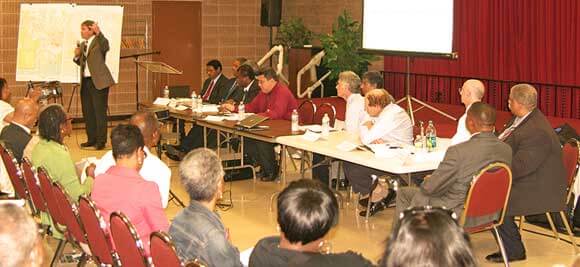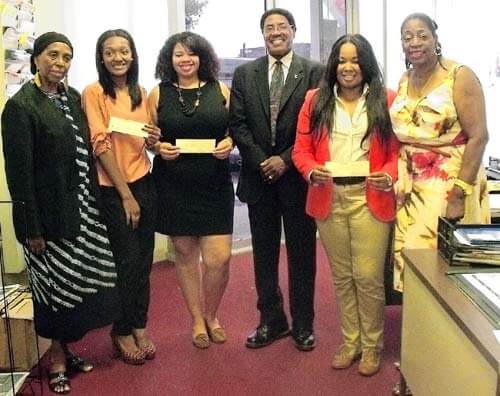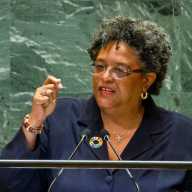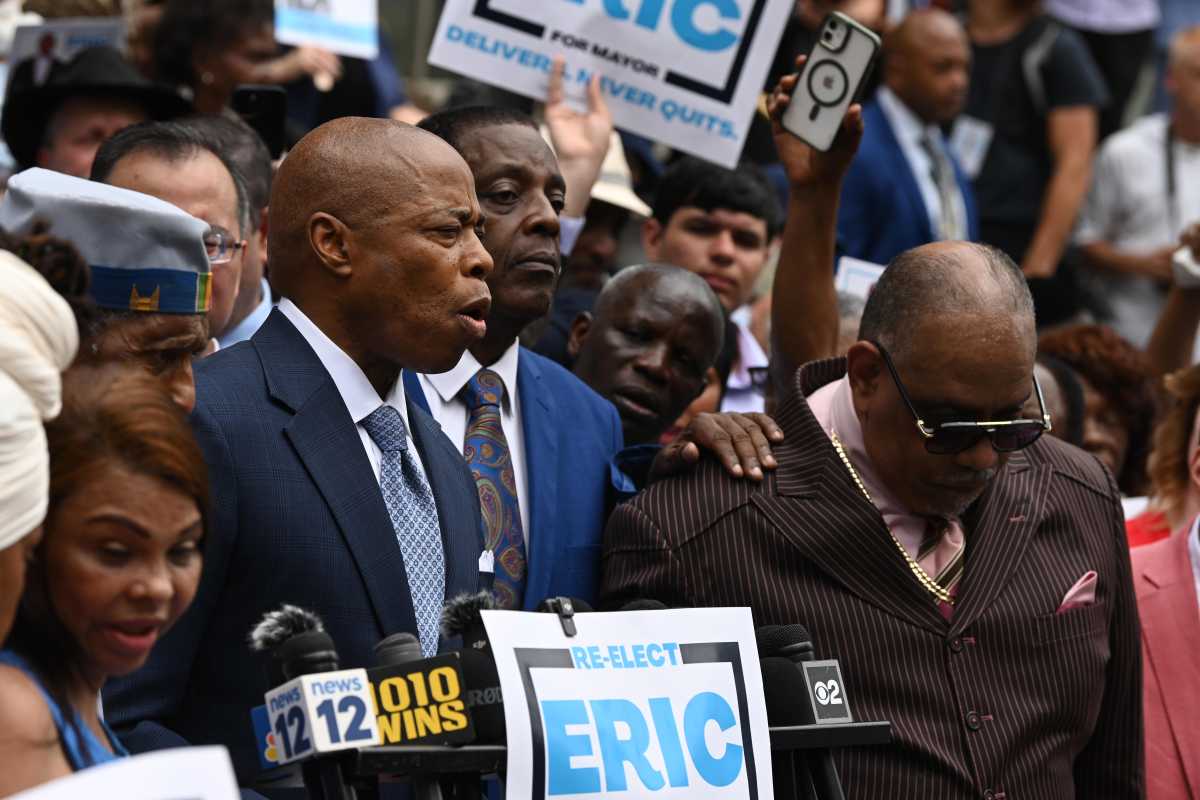Residents of Southeast Queens have expressed concern over environmental problems they faced and are dissastified with answers provided by environmental officials.
They expressed their views during an Environmental Town Hall to address ground water intrusion, rising water table, sewer and infrastructure issues in Southeast Queens sponsored by Assemblyman William Scarborough and Councilman Leroy Comrie.
The U.S. Department of Environmental Protection (EPA), NYS Department of Environmental Conservation (NYS DEC) and the NYC Department of Environmental Protection (DEP) were the agencies invited to answer questions. The community turned out to get answers to their questions about flooding and standing water on their property and streets.
The Town Hall was co-sponsored by all the elected officials in the community, and Assemblywoman Vivian Cook, Councilmen James Sanders and Ruben Wills attended, as well as representatives from the offices of Sen. Malcolm Smith and Sen. Shirley Huntley.
Assemblyman Scarborough outlined the problem in Southeast Queens and asked what plans are being made to remedy this situation.
DEP Assistant Commissioner Mark Lanaghan in his presentation highlighted the following:
There are 2,759 miles of sewer systems in Queens consisting of 1,019 miles of sanitary sewers, 797 miles of storm sewers and 943 miles of combined sewers.
Large areas of Queens still lack storm sewers, including Southeast Queens, parts of Whitestone and the Rockaways. Southeast Queens experiences chronic flooding due to topography and lack of storm sewers.
From 2002 through 2010, DEP spent $1.7 billion on projects in Queens. DEP projects it will spend $729 million on projects in Queens. $291 million will be on sewers and $43 million of that will be on projects in Community Boards 8, 12 and 13.
Lanaghan discussed many long range plans, some of which would not be completed untill 2019, such as the construction of a bypass tunnel, which will involve breaking into the 85-mile tunnel that brings drinking water to NYC.
He also talked about Queens bluebelt initiatives. Bulebelt is a drainage planning technique that combines conventional storm sewers and natural wetlands and streams to manage storm water and a series of these bluebelt projects is being planned for Twin Ponds, Springfield Lake, Brookville Triangle and Baisley Pond.
Community residents were dissatisfied with not getting their problems addressed now. What was going to be done to address the flooding now?
Linda Hazel, a 22-year cancer survivor, has lived next door to Station Six for the past 50 years, where toxic chemicals seeped into the wells from a dry cleaning plant that had been located there and caused toxic plumes. The plant was located on 109th Avenue between 164th and 165th Street. She questioned whether the timetable presented by Commissioner Lanaghan for correcting the problems would occur in her lifetime.
Another resident complained that on her block, 134th Avenue and 155th Street, was plagued with standing water and the problems caused by that were roots from trees planted by the city were infiltrating the sewer pipes and causing the roots of the trees to come up through the concrete of the sidewalks.
Councilman Ruben Wills suggested trying to establish a fund to pay for the fixing of the concrete, which residents have had to pay for repeatedly every few years. Another resident complained of raw sewage back-up in her and neighbors’ homes.
Another resident living on 165th Street between 115th and 116th Streets complained about constant water in front of his house. Karen Ellis of DEP said homes on that block were built below grade level in the 1930s and 1940s. She said an additional catch basin has to be installed or the street needs to be regraded. Commissioner Lanaghan said he was going to personally visit the block.
Scarborough and Comrie concluded the meeting by saying “our questions have not been satisfactorily answered. We are going to have to collectively put pressure on DEP and the city to address these problems now.”

























